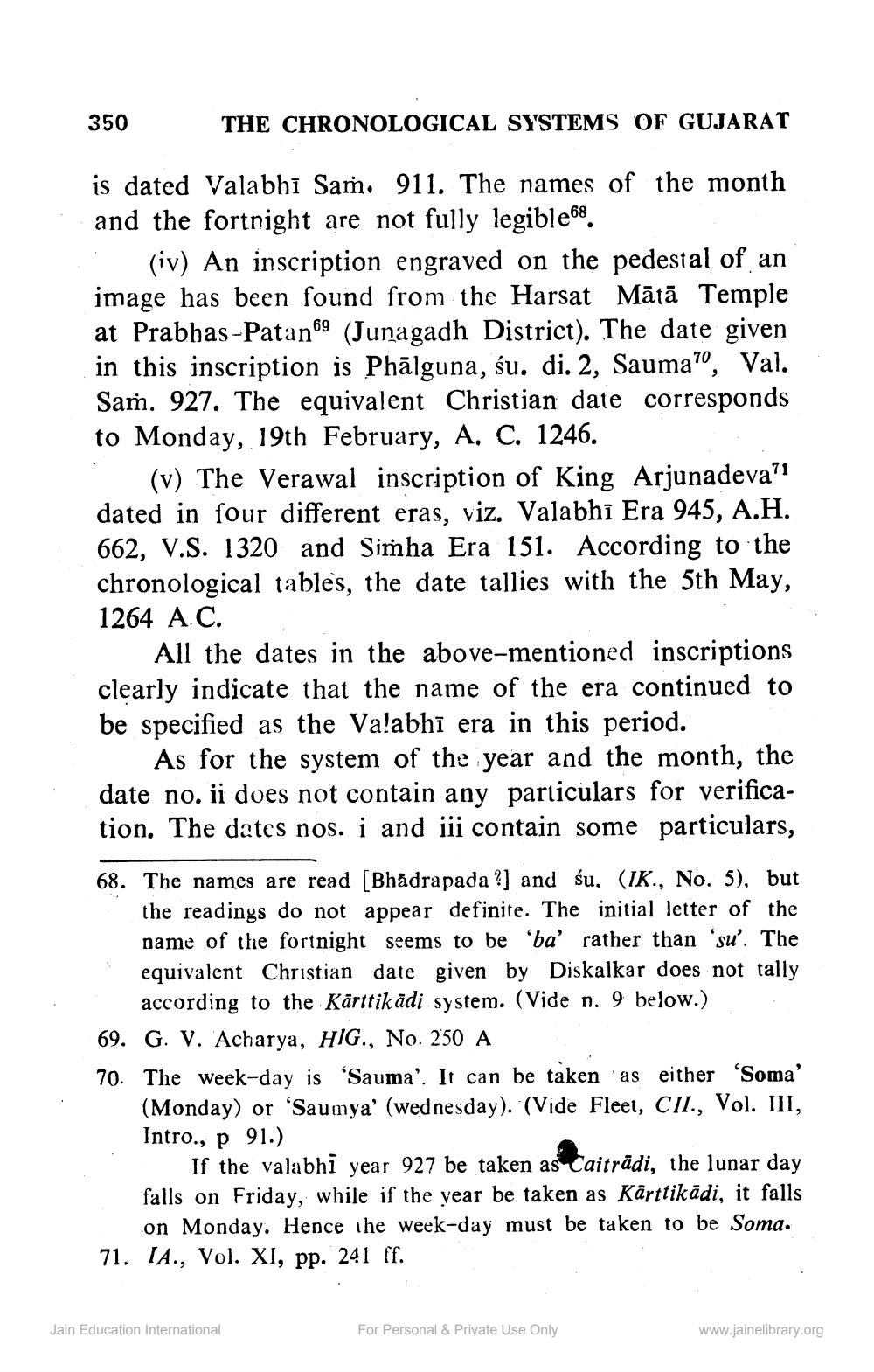________________
350
THE CHRONOLOGICAL SYSTEMS OF GUJARAT
is dated Valabhi Sam. 911. The names of the month and the fortnight are not fully legible68.
(iv) An inscription engraved on the pedestal of an image has been found from the Harsat Mātā Temple at Prabhas-Patan69 (Junagadh District). The date given in this inscription is Phālguna, śu. di. 2, Sauma, Val. Saṁ. 927. The equivalent Christian date corresponds to Monday, 19th February, A. C. 1246.
(v) The Verawal inscription of King Arjunadeva? dated in four different eras, viz. Valabhi Era 945, A.H. 662, V.S. 1320 and Simha Era 151. According to the chronological tables, the date tallies with the 5th May, 1264 AC.
All the dates in the above-mentioned inscriptions clearly indicate that the name of the era continued to be specified as the Valabhī era in this period.
As for the system of the year and the month, the date no. ii does not contain any particulars for verification. The dates nos. i and iii contain some particulars,
68. The names are read [Bhådrapada ?] and su, (IK., No. 5), but
the readings do not appear definite. The initial letter of the name of the fortnight seems to be 'ba' rather than 'su'. The equivalent Christian date given by Diskalkar does not tally
according to the Kärttikādi system. (Vide n. 9 below.) 69. G. V. Acharya, HIG., No. 250 A 70. The week-day is ‘Sauma'. It can be taken as either 'Soma'
(Monday) or ‘Saumya' (wednesday). (Vide Fleet, CII., Vol. III, Intro., p 91.)
If the valabhi year 927 be taken as Caitrādi, the lunar day falls on Friday, while if the year be taken as Kärttikādi, it falls
on Monday. Hence the week-day must be taken to be Soma. 71. IA., Vol. XI, pp. 241 ff.
Jain Education International
For Personal & Private Use Only
www.jainelibrary.org




